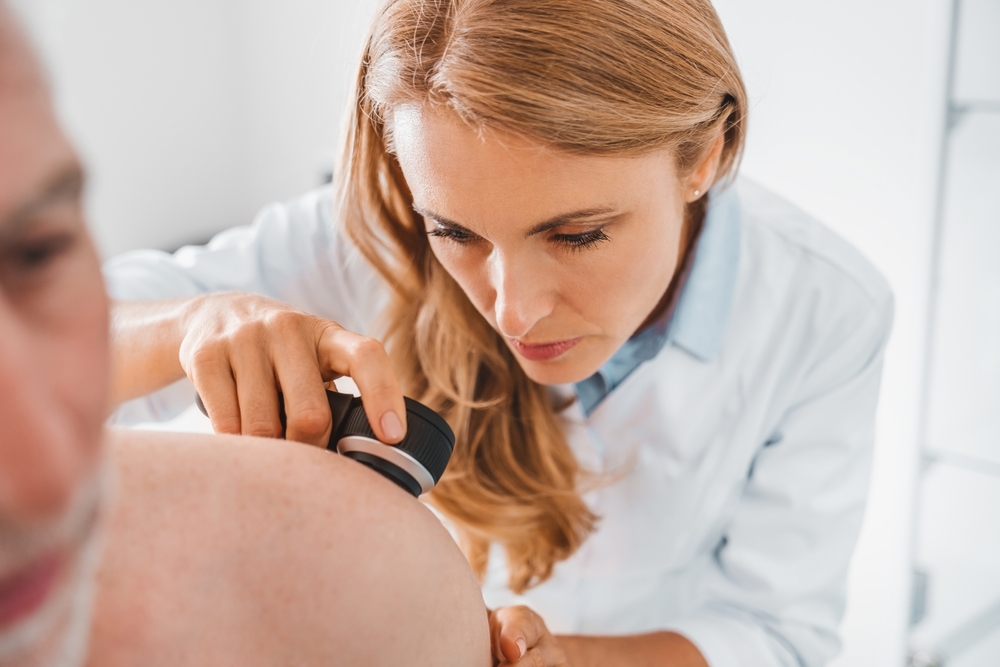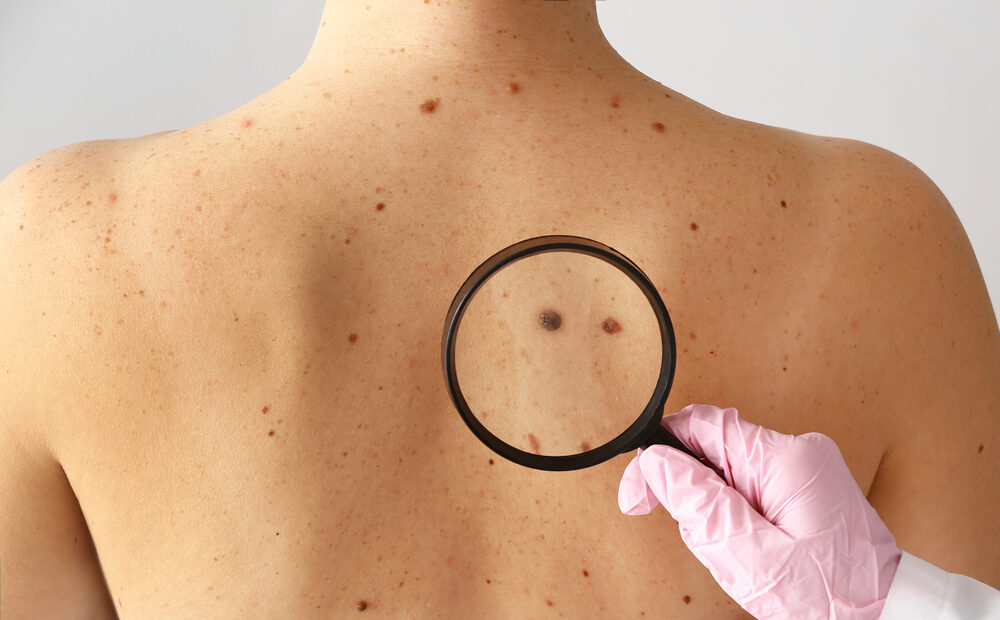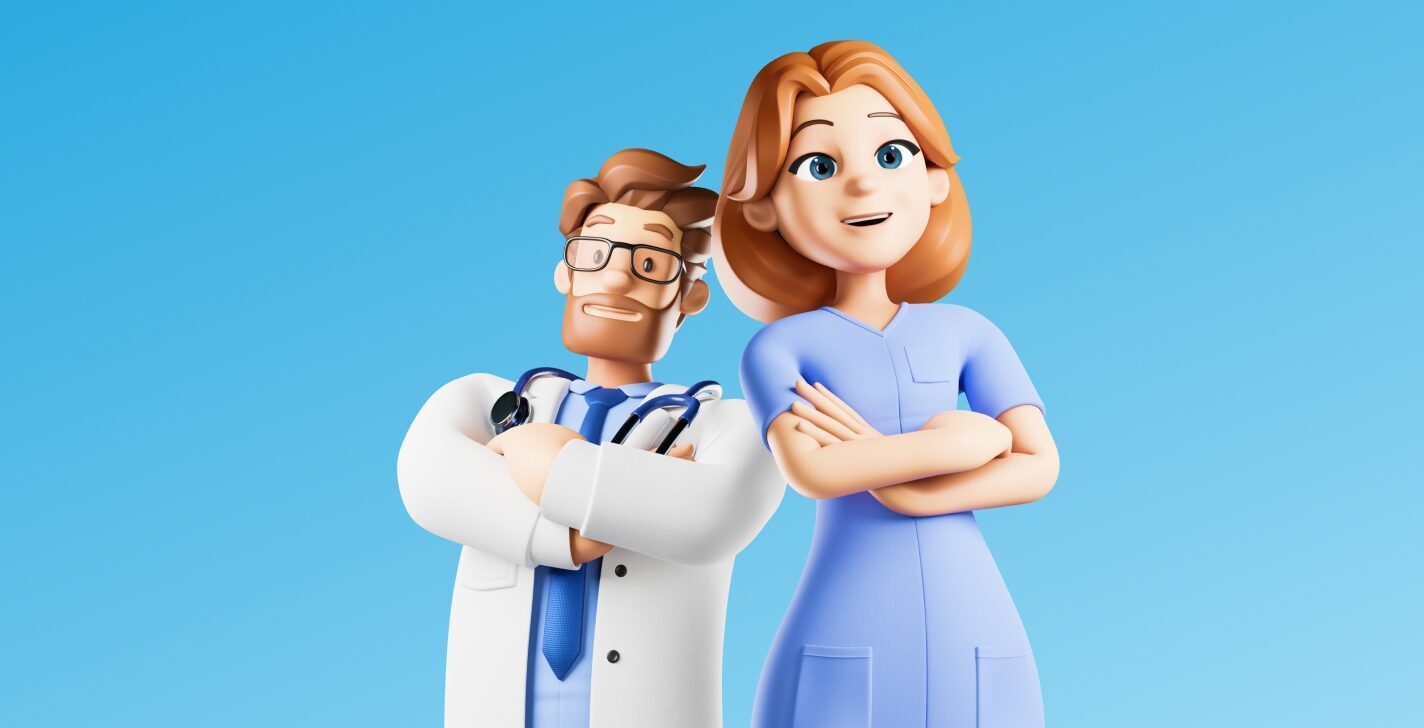
☝️ The most important facts in brief
- A dermatologist is also known as a skin doctor and deals with the examination, diagnosis and treatment of skin, hair and nail diseases.
- In order to start the five-year training programme to become a dermatology specialist, you must first have completed the six-year medical degree.
- The most common skin diseases treated in dermatology include psoriasis, acne and skin cancer.
📖 Table of contents
A dermatologist is a specialist in skin and skin diseases. This speciality also includes the treatment of mucous membranes and skin appendages, in particular nails and hair. Venereal diseases that affect the mucous membranes are also a case for the dermatologist.
Read on and find out more about the work of dermatologists and how you can enter this profession in this article.
Are you interested in studying medicine?
We will be happy to advise you free of charge about your options for studying medicine, including advice on studying medicine in another EU country, which is fully recognised in Germany.
A dermatologist is a specialist in skin and sexually transmitted diseases
If you are a dermatologist, your tasks will include the diagnosis and treatment of various skin diseases in different areas of the skin. Venereal diseases also fall within your area of responsibility. You will assess skin changes and also treat skin appendages such as hair and nails as well as mucous membranes.
Dermatologists offer preventive examinations and are active in aftercare and rehabilitation. As a dermatologist in a clinic, you will not only be contacted by patients themselves, but also by colleagues from other specialities who need an assessment of various skin symptoms in their patients.
Examinations and diagnostic methods in dermatology
A dermatologist uses various procedures to recognise and treat skin diseases. The visual examination plays an important role. In addition to his own eyes, the dermatologist uses a device called a dermatoscope during examinations. This enables him to view the deeper layers of the skin.
Dermatologists may take biopsies if necessary: A sample of the affected area or the entire skin change is taken, which can then be viewed under a microscope. This is one of the ways in which skin cancer is identified.
Blood tests help to diagnose systemic diseases such as lupus erythematosus. Swabs are common if venereal diseases are suspected. The allergy test is another diagnostic tool frequently used by dermatologists.
Skin screening as one of the most important activities of dermatologists
Prevention is an important topic in dermatology. Early detection plays a decisive role in skin cancer in particular, because unlike many other types of cancer, it can usually be treated relatively well if detected in good time.
As a dermatologist, you examine conspicuous changes using a magnifying glass and reflected light microscope. Regular screening by a dermatologist is recommended primarily for people with a high risk of skin cancer. During this preventative measure, the dermatologist takes a close look at all moles, liver spots and skin changes in the truest sense of the word.
Assessing moles - the ABCDE rule
The ABCDE rule is an important aid in assessing moles, both for the dermatologist and for the patient during self-examination. This states that if there are changes in the skin, attention should be paid to whether the pigmented spot fulfils one or more of the following criteria:
- Asymmetry: Irregular shape of the mole.
- Border/LimitationIrregular or blurred edges.
- Colour/colourDifferent colours within the mole.
- DiameterLarger than 5 mm.
- SublimityThe spot is not even, but stands out from the surrounding skin.
If one or more of these criteria are met, it is advisable to have the altered areas assessed by a dermatologist.
What treatments does a dermatologist carry out?
In dermatology, different treatment options are used depending on the skin disease.
These include:
- Superficially applied ointments, creams and gels
- Drug treatment
- Surgical procedures to remove skin tumours, moles and other skin changes
- Laser therapy for the treatment of pigmentation disorders and other problems
- Cryotherapy to freeze warts and other skin appendages
- Use of UV light to treat various ailments
Diseases frequently encountered in dermatology
Dermatologists diagnose and treat a wide range of skin diseases and changes to the skin. Some skin diseases are particularly common.
The most common diseases include
- AcneA widespread skin disease that is particularly common in adolescents.
- EczemaInflammatory skin reactions leading to redness and itching.
- PsoriasisA chronic skin disease that causes scaling and is therefore also known as "psoriasis".
- Skin cancerMalignant tumours of the skin that must be detected and treated at an early stage.
- WartsBenign skin growths, often caused by viruses.
- RosaceaChronic facial redness and inflammation.
- Venereal diseasesSkin and mucous membrane diseases in the genital area.
The dermatologist uses specialised diagnostic and therapeutic methods to identify the diseases mentioned and find the appropriate treatment options.
The dermatologist's work also includes prevention and aftercare to ensure that certain diseases do not occur in the first place or do not return.

Working in your own practice or in a large clinic?
As a dermatologist, you have the choice of opening your own practice or working in a large clinic.
As a dermatologist in private practice, you will be involved a lot in preventive care, but the treatment of skin and sexually transmitted diseases will also play an important role.
In large clinics, you as a doctor will also have to perform somewhat larger operations and provide comprehensive advice to your colleagues from another speciality whose patients have skin changes in addition to the underlying disease or even because of it.
How to become a dermatologist
In addition to the question "What is a dermatologist?", the question "How do I become a dermatologist?" naturally plays an important role if you are interested in this branch of medicine. We will therefore now show you how the training of a dermatologist works.
Medical studies
Specialists in dermatology and sexually transmitted diseases must have an initial period of 6 years. Study medicine. Although dermatology is covered during this degree programme, the course includes numerous other topics.
Firstly, in the pre-clinical part of the degree programme, you will be taught the basics of the human body and its functions, which primarily include anatomy, biology and physiology.
The subsequent clinical part then deals with a wide variety of diseases and treatment options. Dermatology is taught here for one semester.
The degree programme is completed after a practical year with the state examination. You can then work as an assistant doctor in the dermatology clinic or in various other specialist areas.
Further training as a specialist in skin and sexually transmitted diseases
Once you have completed your studies, you can start training as a specialist in skin and sexually transmitted diseases alongside your work as a doctor.
It will then take a further 5 years until you are a fully qualified dermatologist.
The contents of the specialist training programme
Training to become a specialist in skin and sexually transmitted diseases is extensive. It lasts a total of 60 months and covers the following areas, among others:
- Recognition and diagnosisSkin diseases and changes in the mucous membranes.
- Therapy: Treatment methods for acute and chronic skin conditions.
- Surgical interventionsRemoval of tumours and other changes to the skin.
- RehabilitationAftercare and restoration of skin health.
- Skin protectionPreventive measures against skin damage.
- Hormone-related diseases in women and menSome changes to the skin and mucous membranes can be gender- or hormone-specific.
During their training, dermatologists work in various specialist areas and are taught in-depth knowledge. After passing the examination, you can then work as a dermatologist.
Free information material
Studying medicine abroad 🎉
Order your info pack now, find out more about the Studying medicine abroad and get started as a medical student!





